Wood apple is neither an apple nor made of wood, yet it possesses the quirks of both. This little-known fruit, cherished in parts of South Asia, particularly in India, Sri Lanka, and Thailand, has a history as rich as its taste. If you’ve never heard of it, buckle up—this is a wild ride into the world of one of nature’s most fascinating oddities.
What is This Wood Apple a.k.a Aegle marmelos a.k.a Bael Fruit?

Picture this: You’re walking through a bustling street market in India. Amid the vibrant chaos, a vendor enthusiastically hands you what looks like a small, round, slightly misshapen coconut. It has a hard, rugged, brown shell that could easily be mistaken for a lump of dried clay. But this is no coconut—it’s a Bael fruit, also known as the wood apple (Aegle marmelos). The real surprise comes when you crack it open. Inside, you’ll find a sticky, aromatic pulp that looks completely different from any apple you’ve ever seen.
Why Call It a Wood Apple?
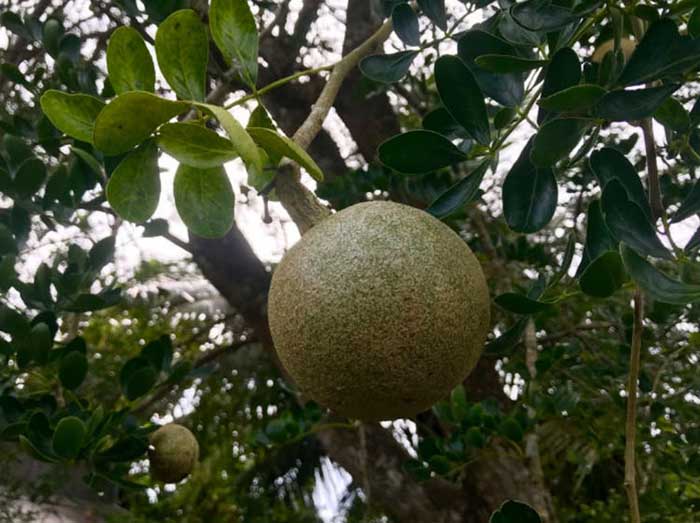
Names are tricky things, and the wood apple is a perfect example. It earned its misleading title because of its two most striking features: its rock-hard outer shell (which could fool anyone into thinking it’s a piece of wood) and its somewhat apple-like shape. But that’s where the resemblance ends. The taste, the texture, and even the way it’s consumed make it clear that the wood apple is playing its own game, unconcerned with the usual expectations we have for fruit.
A Smell That Divides Opinions
Let’s talk about the elephant in the room—or rather, the fruit in the marketplace. One of the first things you’ll notice about the wood apple is its distinctive aroma. For some, it’s delightfully fragrant, carrying hints of tamarind, citrus, and earthy sweetness. For others, it’s… an acquired smell. Some compare it to blue cheese, others to fermented fruit, and a few even to gym socks. But don’t let that scare you! Many of the world’s most treasured delicacies—like durian and stinky tofu—are famous for their polarizing scents.
How to Eat a Wood Apple Like a Pro
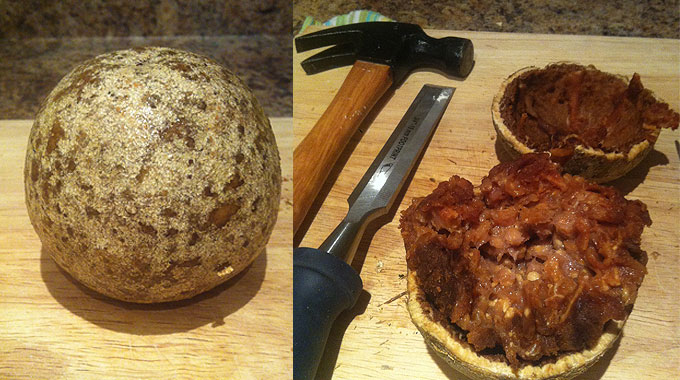
If you’re a first-timer, you might be scratching your head, wondering how to approach this rock-like fruit. Here’s the trick: smash it! Unlike other fruits that require gentle peeling, the wood apple demands a bit of force. You can crack it open by slamming it against a hard surface or using a knife to chisel through its shell. Once open, you’ll find a sticky, fibrous pulp that’s ready to eat. Some prefer to scoop it out and eat it raw, while others blend it into drinks or mix it with sugar and spices for an exotic dessert.
What Does It Actually Taste Like?
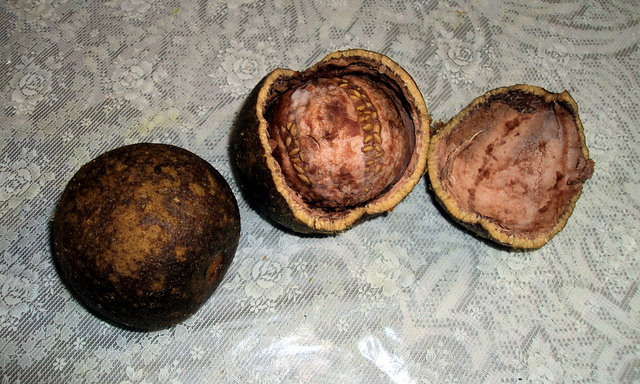
Describing the flavor of a wood apple is like trying to explain the taste of a sunset—complex, layered, and subjective. The best way to put it? It’s a medley of sweet, tangy, and slightly astringent notes. Imagine tamarind and ripe banana had a love child, and you might get close. It’s rich, almost caramel-like, with a depth of flavor that lingers long after your first bite.
A Superfood in Disguise
Beyond its fascinating taste, the wood apple is a powerhouse of nutrition. Ancient Ayurvedic texts sing praises of its medicinal benefits, and modern science backs it up. Packed with vitamin C, fiber, and antioxidants, it aids digestion, boosts immunity, and even acts as a natural detoxifier. Traditional healers use it to treat ailments ranging from indigestion to respiratory issues. And here’s a bonus: It’s believed to be an excellent natural cooling agent, perfect for those sweltering summer months.
A Fruit with a Spiritual Side
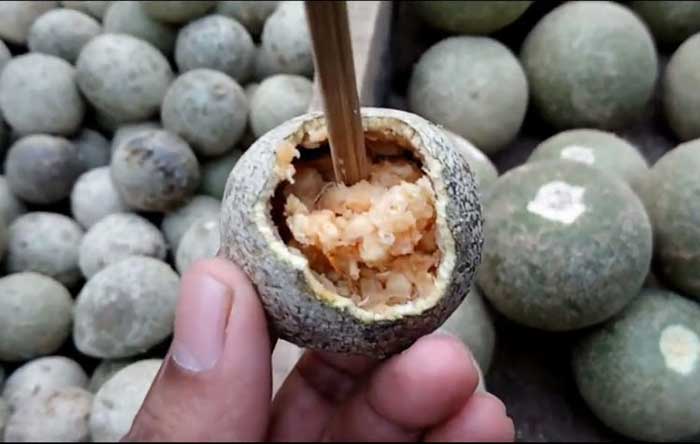
In India, the wood apple isn’t just food—it’s sacred. It’s closely associated with Lord Shiva, one of Hinduism’s most revered deities. The leaves of the Bael tree are commonly offered in temples as a symbol of devotion. In some rural traditions, the fruit itself is believed to bring good luck and prosperity. So, the next time you see a wood apple, remember—it’s not just a fruit, it’s a spiritual experience.
The Lesser-Known Culinary Star
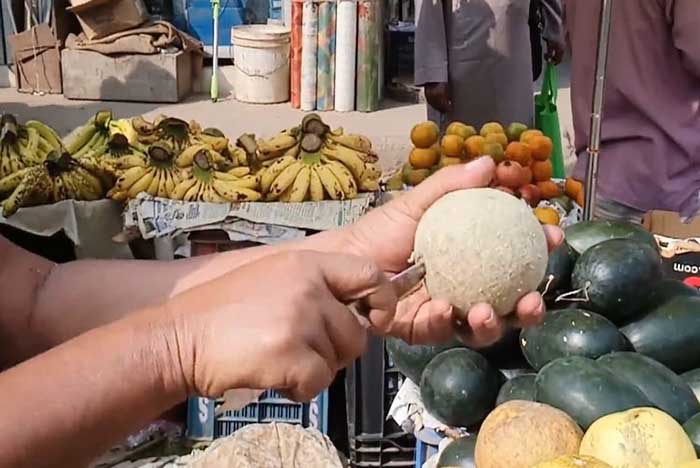
Despite its oddities, the wood apple is a hidden gem in the culinary world. From Bael sherbet, a refreshing summer drink, to delicious jams, chutneys, and even ice creams, this fruit has a surprising versatility. In Sri Lanka, it’s blended with coconut milk and sugar to create a traditional wood apple milkshake, a local favorite. And in Thailand, it often makes its way into desserts that blend sweet and sour flavors with a tropical twist.
Why the World Hasn’t Fallen in Love with It (Yet)
With all these incredible qualities, why isn’t the wood apple a global sensation? Well, its hard-to-open shell, unconventional aroma, and unfamiliar taste make it a tough sell for unadventurous eaters. Unlike mangoes, bananas, or apples, which are immediately appealing, the wood apple demands a bit of effort, both physically and mentally. But for those who dare to try it, the reward is an unforgettable experience.
The Future of Wood Apple: A Rising Star?

As the world becomes more interested in exotic and superfoods, the wood apple is slowly making its way into the spotlight. With rising interest in Ayurvedic nutrition and sustainable foods, it’s only a matter of time before this strange yet fascinating fruit gets the attention it deserves. Maybe, in a few years, you’ll find wood apple juice at your local organic store or see celebrity chefs experimenting with it on fancy restaurant menus.
Final Thoughts: Dare to Try?
So, here’s the million-dollar question: Would you try a wood apple? If you’re an adventurous foodie, the answer should be a resounding yes. It’s not just about the taste; it’s about the experience—the thrill of cracking open the shell, the rush of that first aromatic hit, and the deep, complex flavors that follow. The wood apple is a fruit that defies expectations, a culinary enigma waiting to be explored.
Next time you’re in an Asian market, don’t just walk past that odd, coconut-like fruit. Pick it up, crack it open, and take a bite. Who knows? You might just discover your new favorite superfruit.
You might have missed many other fascinating pieces of information, follow Maybemiss.com to stay updated on things that may be old but feel incredibly new!

















Discussion about this post